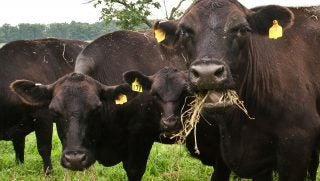Sustainability. That “s” word that often makes us cringe in the industry, because it’s a mission statement every farm must follow — if a practice isn’t profitable, and doesn’t maintain land and resources for the next generation, then it can’t be sustainable.
“We believe that nothing is sustainable that’s not profitable,” said John Motter, United Soybean Board Chair. “If I can’t do it in a profitable way, I won’t do it very long.”
We had the chance to sit down and visit with Motter at this year’s Commodity Classic in San Antonio, Texas, about sustainability and what consumers are actually looking for when they demand it in their products.
“It always comes back to the end user. What do those people who sell our products want from us, what do they need in order to meet the needs of the consumer? Sustainability is a big message these days,” Motter said. “What does it mean for farmers and what is it that creates a sustainable farm? We look at things like conservation practices, we look at how we can improve soil health, how can we leave a smaller footprint on the environment, and at the same time, how can we do this and maintain profitability?”
Seeing tangible returns is also important.
New products such as Bridgestone tires, RAPTOR tractor belts, and John Deere tractors all have components made with U.S. soybeans now. In 2016, a number of products were commercialized based on USB-funded research. Soy-based products now span from on-farm usage to household items, like adhesives for kitchen cabinetry, soaps, and shampoos. USB’s 2017 Soy Products Guide features hundreds of soy-based products currently available.
“It’s locally grown, it’s domestically grown. It’s important not just to the grower, but people right down to the end user – making all these various products and at the same time feeding livestock and putting food on the table,” Motter said.
Even with this year’s commodity prices, Motter encourages soybean growers to remain optimistic.
“We all have to take care of the bottom line. We have to stay the course,” Motter said. “We have to always be looking at our inputs and making sure we can remain profitable and sustainable in everything we do on the farm.”



